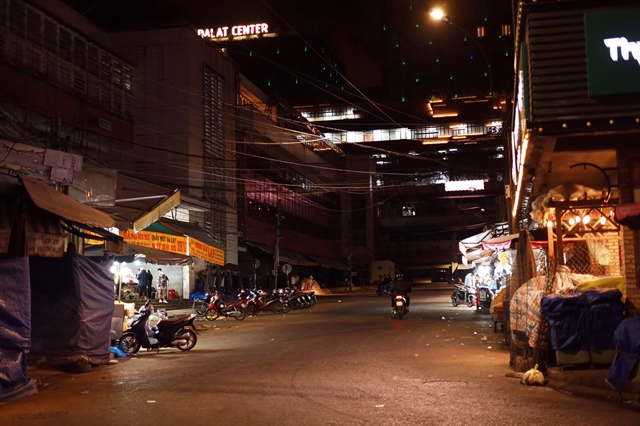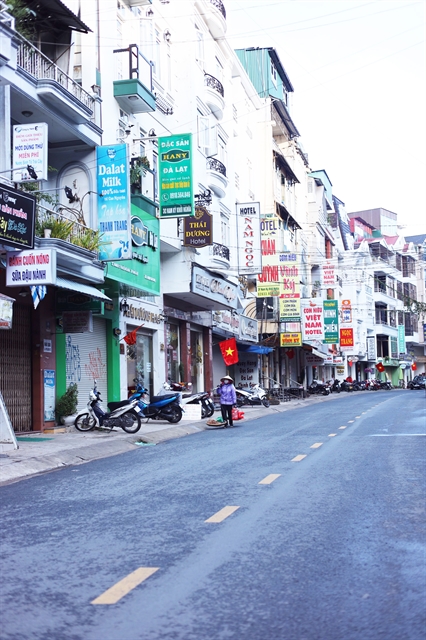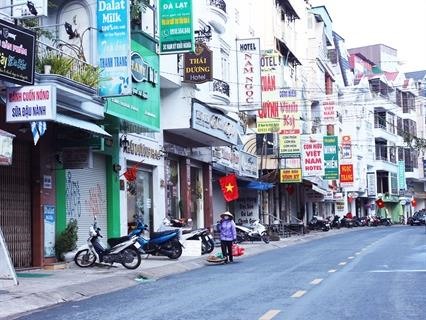[ad_1]
- Brain aneurysm caused worker’s death, not COVID-19 vaccine: doctors
- Manufacturing sustained in HCM City despite social distancing
- Singapore proposes ASEAN nations co-host SEA Games
- AI app helps push mask wearing on public transport
- Military-developed robot sent to Bắc Giang to support COVID-19 fight

Ly Ly Cao
HÀ NỘI — The fourth wave of COVID-19 infections in Việt Nam has caused disruptions to most sectors once again as the country was preparing for the tourism season.
This season was expected to help revive the country’s tourism industry after it was heavily damaged by the previous COVID-19 outbreaks.
As the whole country has implemented measures to contain the new spread of COVID-19, most famous tourism destinations are now closed, meaning many tourism businesses are struggling to survive, especially small firms.
Hạ Long City in Quảng Ninh Province, which is home to famous Hạ Long Bay, is included. From May to September is the busiest time for the tourism industry in Hạ Long.
“It is now the tourism season, but all rooms are vacant,” said Trần Khắc Tuấn, 38, owner of a homestay in Hạ Long.
“We have prepared everything to welcome tourists but COVID-19 has returned and destroyed all of our plans.
“Since last year, our customers have fallen to around 10 – 20 per cent. During social distancing, there were no customers. And now the situation is still not positive.
“It is the picture of all accommodation businesses here.”
Besides a homestay, Tuấn also owns a cafe in the hills with sweeping views of the bay, and runs a store selling Bamimo, the famous black baguette.
Since they depend heavily on tourists, all of his businesses have suffered. Seven out of nine stores selling Bamimo in many cities and province have been forced to close, while his homestay and cafe are running at minimum capacity.
“Normally, local tourists will flock to Hạ Long during summer vacation, and foreign tourists come in Autumn and Winter. But since the outbreaks of COVID-19, we have lost both,” Tuấn added.
In 2019, Hạ Long Bay received 4.4 million visitors including 2.9 million foreign tourists, up 6 per cent year-on-year, data from Hạ Long Bay Management Committee showed. However, the number dropped nearly 66 per cent to 1.5 million visitors in 2020 due to the pandemic. Of which, 1.1 million visitors were local tourists while 400,000 were foreigners.
Đà Lạt, another attractive tourism destination to domestic tourists, also faces similar problems after a tourist with COVID-19 travelled there. The city, which is well known for its pleasant weather, vivid landscapes and night market, has deployed measures to contain the spread of COVID-19 since early May.

“I have never seen Đà Lạt this empty,” Nguyễn Nhật Trường, a photographer in Đà Lạt, said.
“The hustle and bustle of Đà Lạt square and night market are now so quiet and deserted. All places close and businesses stop working to fight COVID-19.
“You can only see police cars on the street to spread information about preventing the disease.”
The 26-year-old photographer said that he had no choice but to cancel all customer bookings for May and postponed his plan to open a studio.
“My start-up struggles from the beginning. My budget for opening the studio might also be affected too if the current situation continues. I am a little nervous though,” Trường added.
Adapt to COVID-19
In one way or another, these businesses still have to find their own solutions to cope with the ongoing situation.
“With the fourth wave of infections, we are now used to the sudden changes and find ways to adapt,” Tuấn said.
“At the moment, most of my businesses are closed to adjust our services to meet requirements of residents here.”
But financial issues caused by COVID-19 for over a year prevent him to flexibly change to other business models. Therefore, he decided to take a side-job while waiting for life to return to normal.
“It is not easy because everyone here is changing too, meaning the market share is smaller and more competitive,” he added.
“Our finances are tight to make any differences as others steeply reduce prices instead of improving quality and creating new products.
“So all of my next projects are to provide full-service, from designing, establishing to controlling operations before handing over to investors.”
He believes incomes from these projects can finance his future plans.
“With this, I can afford to implement my own project of innovating and expanding the chain store of Bamimo in Hà Nội and HCM City after COVID-19 is totally contained,” Tuấn said.
To Trường, this time is perfect for improving his photography techniques and preparing to come back once the measures are lifted.
“During social distancing, I want to enhance my skills. Once the pandemic is over I will focus on opening my studio,” the young photographer in Đà Lạt said.
Even though the vaccine programmes have been rolled out nationwide, the percentage of vaccination is still low. It will take a long time for the tourism sector and all elements inside this industry to fully recover like it was before the pandemic.
But with the Government’s policies to promote tourism, vaccination and efforts of every member in the industry, Việt Nam’s tourism industry will thrive again soon. VNS

[ad_2]
Source link
